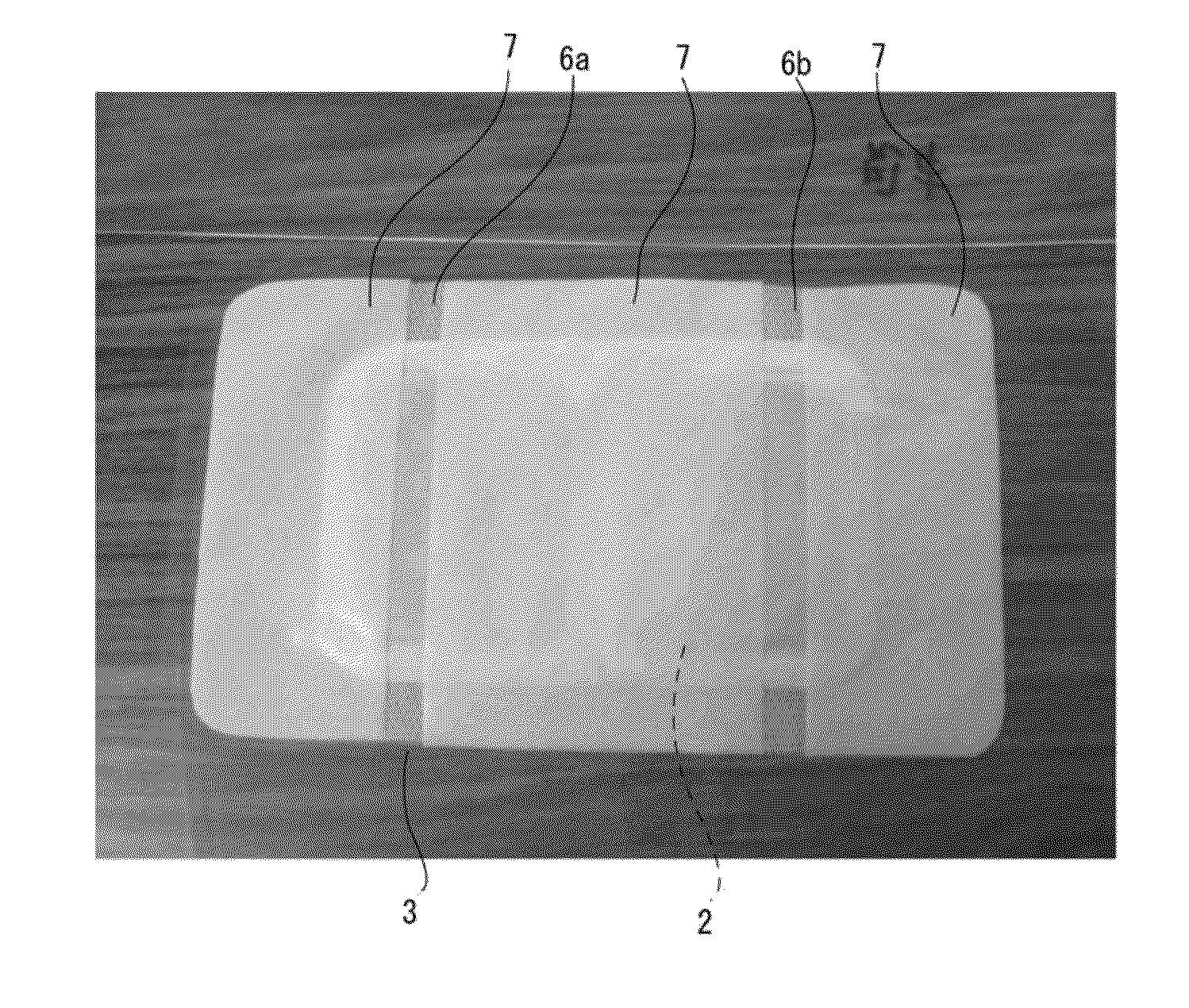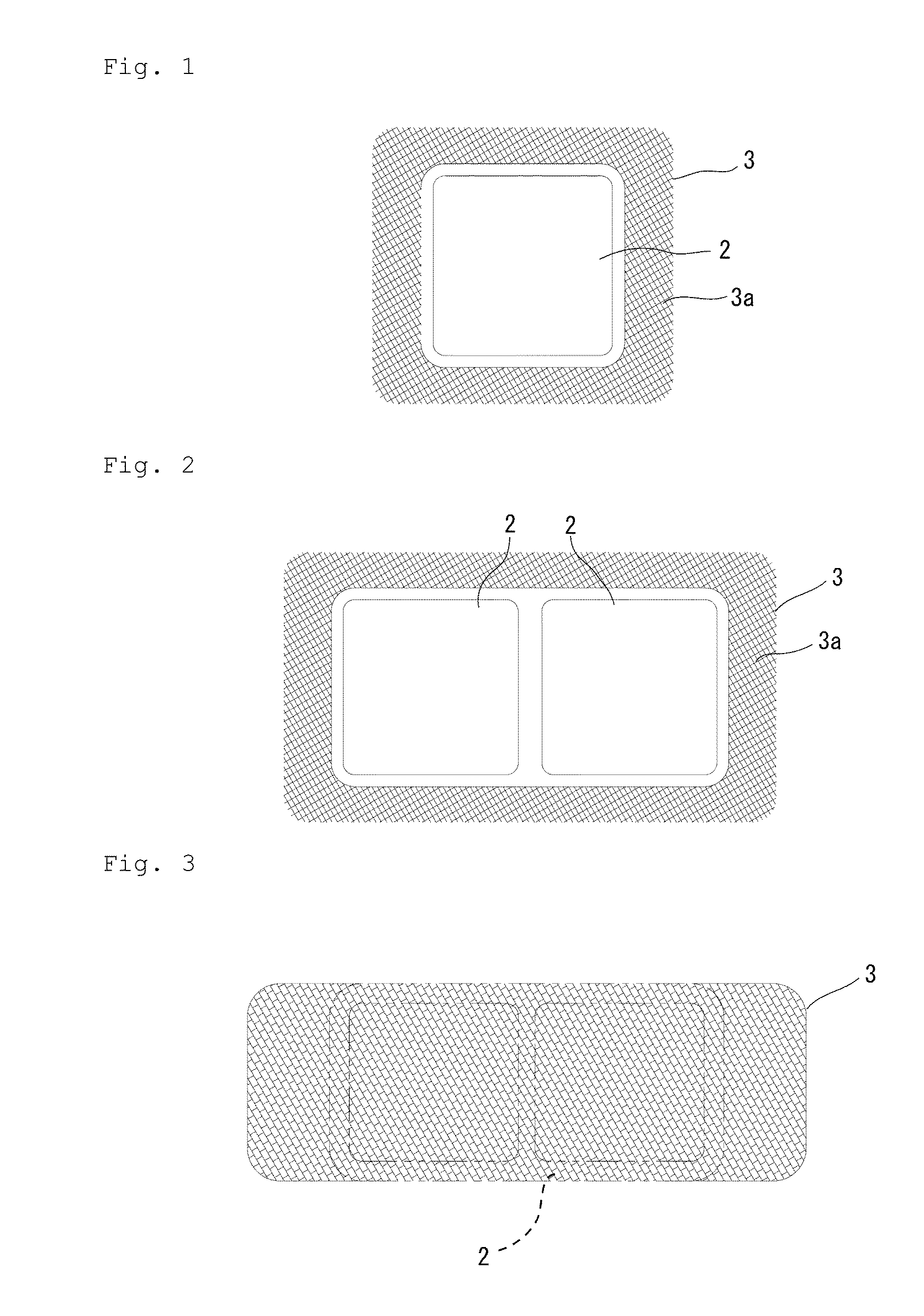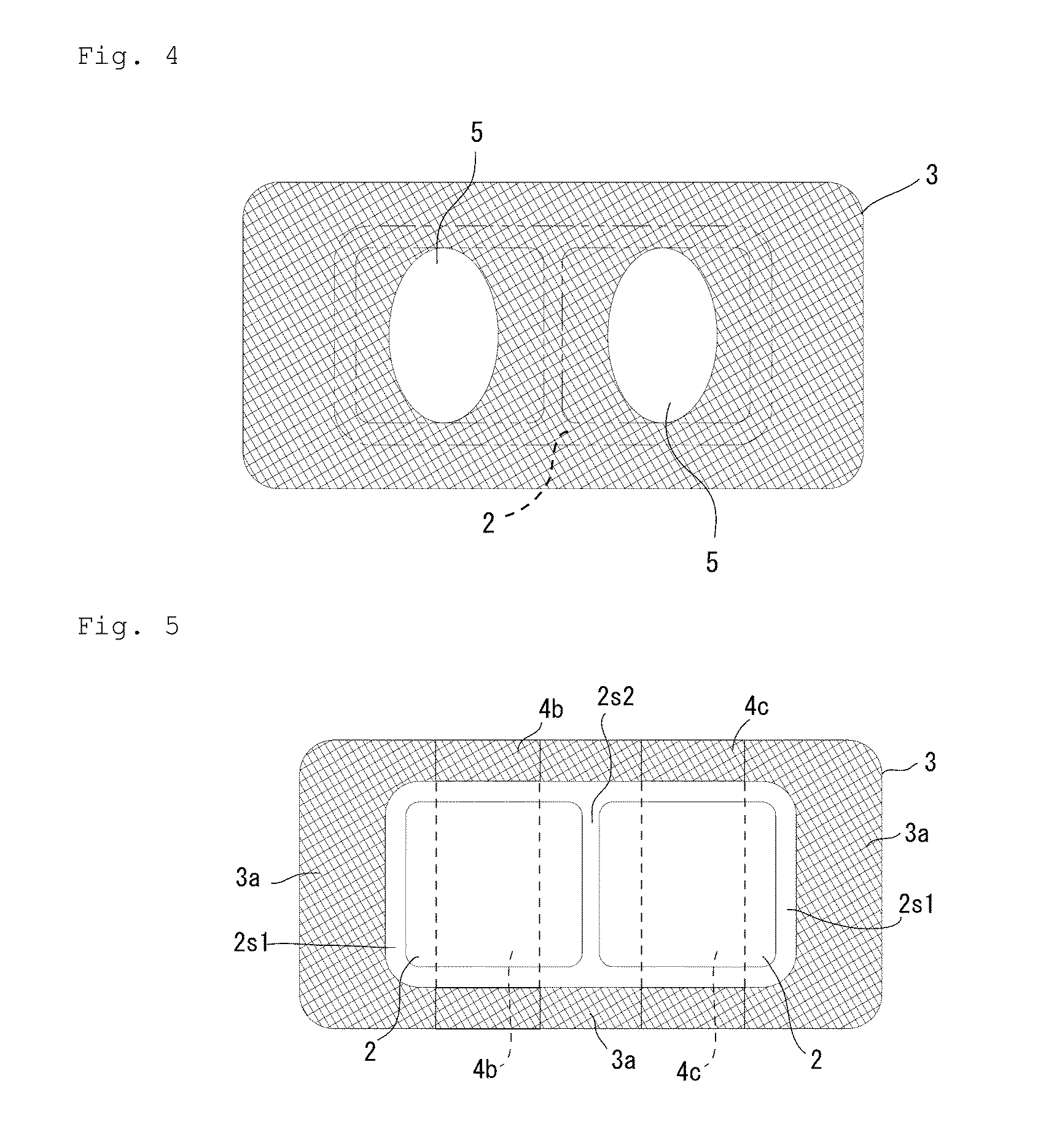Heat generating body
a heat-generating body and body technology, applied in the field of heat-generating bodies, can solve the problems of low temperature burn, discomfort of stripping off the skin, and giving an uncomfortable feeling when in use, and achieve the effects of moderate warmth, mild deformation of the mesh-like sheet, and eliminating discomfor
- Summary
- Abstract
- Description
- Claims
- Application Information
AI Technical Summary
Benefits of technology
Problems solved by technology
Method used
Image
Examples
example 1
[0143]The heat generating composition was placed on a base material formed by laminating polyethylene 70 mm long, 75 mm wide and 40 μm thick on a nylon nonwoven fabric (weight per unit area of 40 g / m2) 70 mm long and 75 mm wide, and the top of the heat generating composition was covered with a covering material formed by laminating a porous film of polyethylene 100 mm long, 115 mm wide and 70 thick on a mesh-like nonwoven fabric (weight per unit area of 40 g / m2) 100 mm long and 115 mm wide. The base material and the covering material were sealed at the peripheral edge of the heat generating composition to form a heat generating member. An adhesive composed of an acrylic solvent-based adhesive was applied (an applied thickness of 23 μm) onto the covering material outside of the seal to form a heat generating body in Example 1.
example 2
[0144]protective sheet 80 mm long, 85 mm wide and 0.38 mm thick was provided on the heat generating member of the heat generating body in Example 1 to form a heat generating body in Example 2.
[0145]The protective sheet in use is structured to laminate a polyethylene film with a thickness of 28 μm on a metallocene polyethylene film with a thickness of 12 μm and to apply an acrylic adhesive thereon with an applied amount of 6±1 g / m2 to laminate a nonwoven fabric with 100% rayon with a weight per unit area of 55±5 g / m2, and the protective sheet was provided on the heat generating member so that the nonwoven fabric was located on the sensor side of a tester.
[0146]Temperature was measured under the following measuring conditions.
[Temperature Measuring Test of the Heat Generating Part]
(A) Testing Condition
[0147]Environmental temperature: 20±1.5° C.
[0148]Placing table: a heater having a hose connecting part for circulating warm water with a height of 100 mm (a volume of 16.42 L) was placed...
example 3
[0156]An explanation is made on an example of changing the weight per unit area and material of the nonwoven fabric to inspect the effectiveness of the protective sheet.
[0157]A heat generating composition was placed on a base material formed by laminating a polyethylene resin film with a thickness of 40 μm on a rayon spunlace nonwoven fabric (weight per unit area of 45 g / m2) 70 mom long and 75 mm wide, and the top of the heat generating composition was covered with a covering material formed by laminating a porous film made of polyethylene resin with a thickness of 70 μm, on a PET spunlace nonwoven fabric (weight per unit area of 30 g / m2) 70 mm long and 75 mm wide. The base material and the covering material were then sealed at the peripheral edge of the heat generating composition to form a heat generating member. An adhesive (23 μm in applied thickness) formed of an acrylic solvent-based adhesive was applied to a mesh-like sheet (weight per unit area of 40 g / m2) made of a PET spun...
PUM
 Login to View More
Login to View More Abstract
Description
Claims
Application Information
 Login to View More
Login to View More - R&D
- Intellectual Property
- Life Sciences
- Materials
- Tech Scout
- Unparalleled Data Quality
- Higher Quality Content
- 60% Fewer Hallucinations
Browse by: Latest US Patents, China's latest patents, Technical Efficacy Thesaurus, Application Domain, Technology Topic, Popular Technical Reports.
© 2025 PatSnap. All rights reserved.Legal|Privacy policy|Modern Slavery Act Transparency Statement|Sitemap|About US| Contact US: help@patsnap.com



